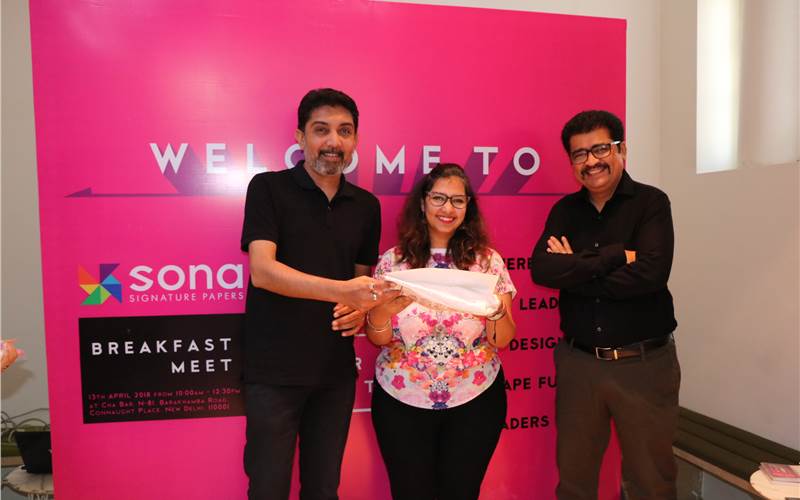Designer Viral Pandya mentors students at Sona’s Breakfast Meet
A great design is a combination of many elements coming together in a perfect harmony to represent an idea. Therefore, according to Viral Pandya, co-founder and chief creative officer of Gurgaon-based design firm Out of the Box, an idea is the first and most important step towards executing a great design. It is the foundation of design. Everything else — the copy, artwork, typography, format, paper — comes later.
18 Apr 2018 | By Dibyajyoti Sarma
Pandya shared his design philosophy during a mentoring session for upcoming designers organised by Sona Papers on 13 April 2018. Among others, the students of Visual Art and Graphic Design, the Indian Institute of Art and Design, New Delhi, attended the session.
Sona has envisioned the ‘Design Workout - Breakfast Meet’ as an informal get-together where upcoming designers get an opportunity to spend some time with leading artists who have redefined design and creativity worldwide. The topic ranges from typography, modern art, advertising design, women in design to the struggles the artist has had to face in the field of design.
“We want to be known by the movements we inspire in the India art scene, possibly hosting a breakfast meeting in the world of graphic design and art,” said Raju Suneja, director, marketing, Sona Papers.
Explaining further, Suneja added, “At Sona Papers, we have always gone above and beyond the business of selling papers. Our mission is to encourage creativity through a rich dissemination of knowledge, art, design sense and inspiration. Through this initiative, we are moving one more step closer to the graphic design fraternity.”
Known for turning mundane into stylish, Viral Pandya has been at the helm of design and advertising for more than 25 years. He has worked with the top advertising agencies, and for giant brands as well as the newcomers, who have made it big with his grey matter.
During his session, Pandya shared varieties of design samples from his large and award-winning portfolio and explained the rationale behind the designs, as he spoke about design identity.
Among the samples, there was a table calendar for students to promote support for the mid-day meal programme, where after the end of each month, a student can tear the page off the calendar and convert it into a letter to be posted.
In another example, Pandya explained how he went looking for a 102-year-old man to photograph him holding a camera to highlight the ‘anti-shake’ feature of the product. This was his way of proving that a picture speaks a thousand words.
In another massive design undertaking, Pandya showed a sample of a set of 30 certificates prepared for a pre-school group, to be given to each and every student.
While he agreed that it’s not easy to sell design ideas to clients, he insisted that educating clients about simple design is a part of the process.
His advice to coming designers? “Take your time. Executing a good design takes time,” he says.














 See All
See All